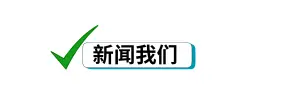In the dynamic world of search engine optimization (SEO), backlinks are foundational pillars. They act as votes of confidence from one website to another, significantly influencing how search engines perceive the authority and relevance of your content. Understanding and implementing effective backlink strategies is crucial for enhancing your visibility online. This guide delves into two primary categories: external backlinks and internal backlinks. Each plays a distinct yet equally vital role in your overall SEO performance. A well-rounded approach integrates both for maximum impact on your digital presence and search rankings. Let us explore the nuances of these powerful linking mechanisms. They are essential tools for any serious digital marketer.
Understanding External Backlinks for SEO Growth
External backlinks, often called inbound links, are links from other websites that point back to your site. These are arguably the most powerful signals of authority to search engines like Google. When reputable and relevant sites link to your content, it signals to search engines that your information is valuable, trustworthy, and authoritative. This concept is sometimes referred to as ‘link juice,’ where the authority flows from the linking site to yours. High-quality external backlinks can significantly boost your domain authority, which is a key metric in SEO. Building a strong external backlink profile requires a strategic approach. It is not just about quantity; quality and relevance are paramount for sustained success. Diversifying your backlink sources also adds to your site’s credibility.
Strategies for Earning Quality External Backlinks
Earning valuable external backlinks is a cornerstone of effective SEO. One highly effective strategy is creating exceptional, unique, and highly shareable content. This ‘linkable asset’ naturally attracts links from other industry sites. Think long-form guides, original research, or compelling infographics. Guest posting on relevant, high-authority blogs is another popular tactic. By contributing valuable content, you can earn a contextual backlink to your site. Broken link building involves finding broken links on other websites and suggesting your content as a replacement. This offers a mutually beneficial solution. Outreach is also vital, building relationships with other webmasters and influencers. A proactive approach to link building yields the best results. Focus on genuine value exchange.
The Impact of External Backlinks on SEO Rankings
The impact of external backlinks on search engine rankings cannot be overstated. Search algorithms heavily rely on these signals to determine a page’s importance and relevance. A robust external backlink profile indicates to Google that your website is a trusted source within its niche. This directly translates to higher rankings in search engine results pages (SERPs). Furthermore, external links contribute significantly to your site’s E-E-A-T (Experience, Expertise, Authoritativeness, Trustworthiness) signals. Google prioritizes content that demonstrates these qualities. Conversely, acquiring low-quality or spammy backlinks can harm your rankings. It is crucial to focus on ethical, white-hat link-building practices. Regular auditing of your backlink profile helps maintain its health. Monitor for any suspicious or detrimental links. They can negatively affect your ranking performance. Maintaining a clean profile is key.
Delving into Internal Backlink Strategies for Site Structure
While external backlinks bring in authority from outside, internal backlinks are links connecting pages within your own website. Their role is equally crucial, though different. Internal links serve multiple purposes. They help search engines discover and index new pages. They pass ‘link equity’ or authority between pages on your site. Perhaps most importantly, they guide users through your content, improving navigation and user experience. A well-thought-out internal linking structure can establish a clear hierarchy for your website. It highlights your most important content. This strategic approach helps search engines understand the relationships between your pages. It also reinforces the topical relevance of various sections. Consistent internal linking ensures content is easily accessible. Users can effortlessly find related information. This improves engagement metrics. It keeps visitors on your site longer.
Optimizing Internal Backlinks for User Flow and Relevance
Optimizing your internal backlink strategy involves several key considerations. First, use descriptive and keyword-rich anchor text. This helps both users and search engines understand what the linked page is about. Avoid generic phrases like “click here.” Second, build logical content clusters. Link related articles together, forming a comprehensive network around a specific topic. This reinforces topical authority. Third, identify your cornerstone content. These are your most important, comprehensive articles. Link to them frequently from other relevant pages on your site. This channels significant link equity to these foundational pieces. A well-planned internal linking strategy enhances user flow, keeps visitors engaged, and ultimately boosts your overall SEO performance. Regular audits of your internal link structure are beneficial. They identify broken links and optimization opportunities. This ensures your site maintains optimal navigability. It strengthens your content’s interconnectedness. This leads to better search visibility.
Both external and internal backlinks are indispensable components of a successful SEO strategy. External links validate your site’s authority from external sources. Internal links define your site’s structure, distribute authority, and enhance user experience. A comprehensive approach involves actively pursuing high-quality external links while meticulously crafting an intelligent internal linking architecture. By prioritizing both, you build a robust and search-friendly website. This dual focus ensures your content is not only discovered but also perceived as valuable and authoritative by search engines and users alike. Investing time in these linking strategies will yield significant long-term returns for your online presence. Consistent effort in this area pays dividends. It solidifies your position in search results.
